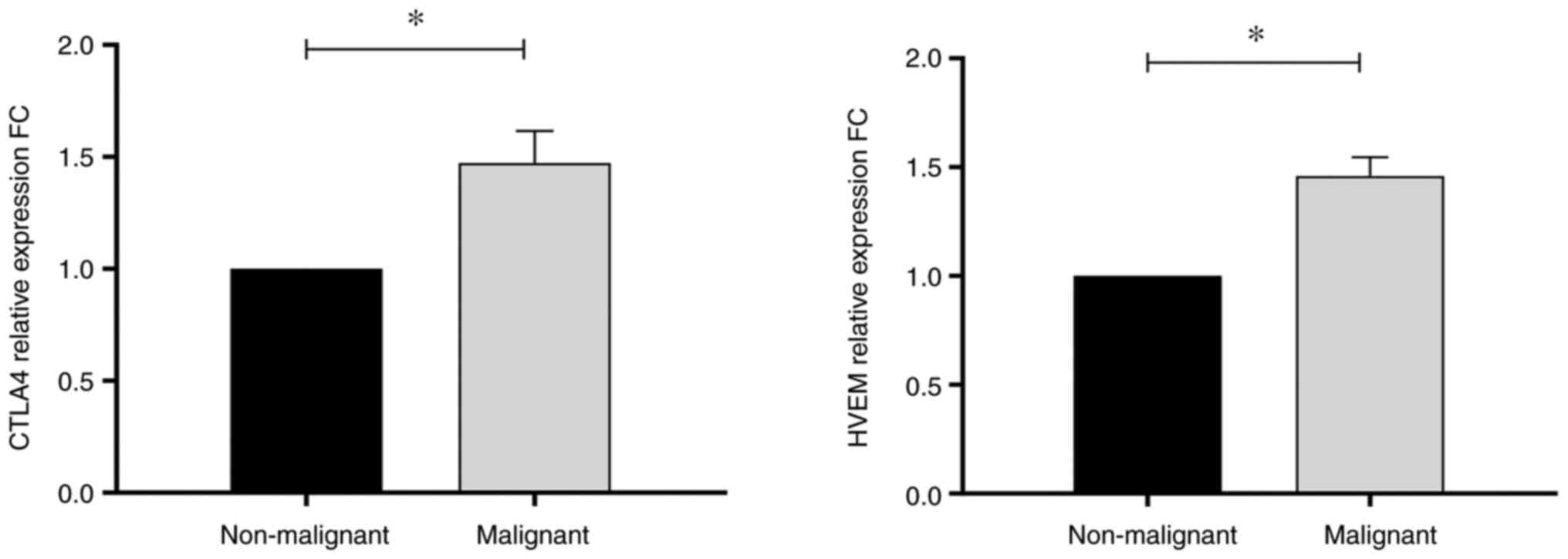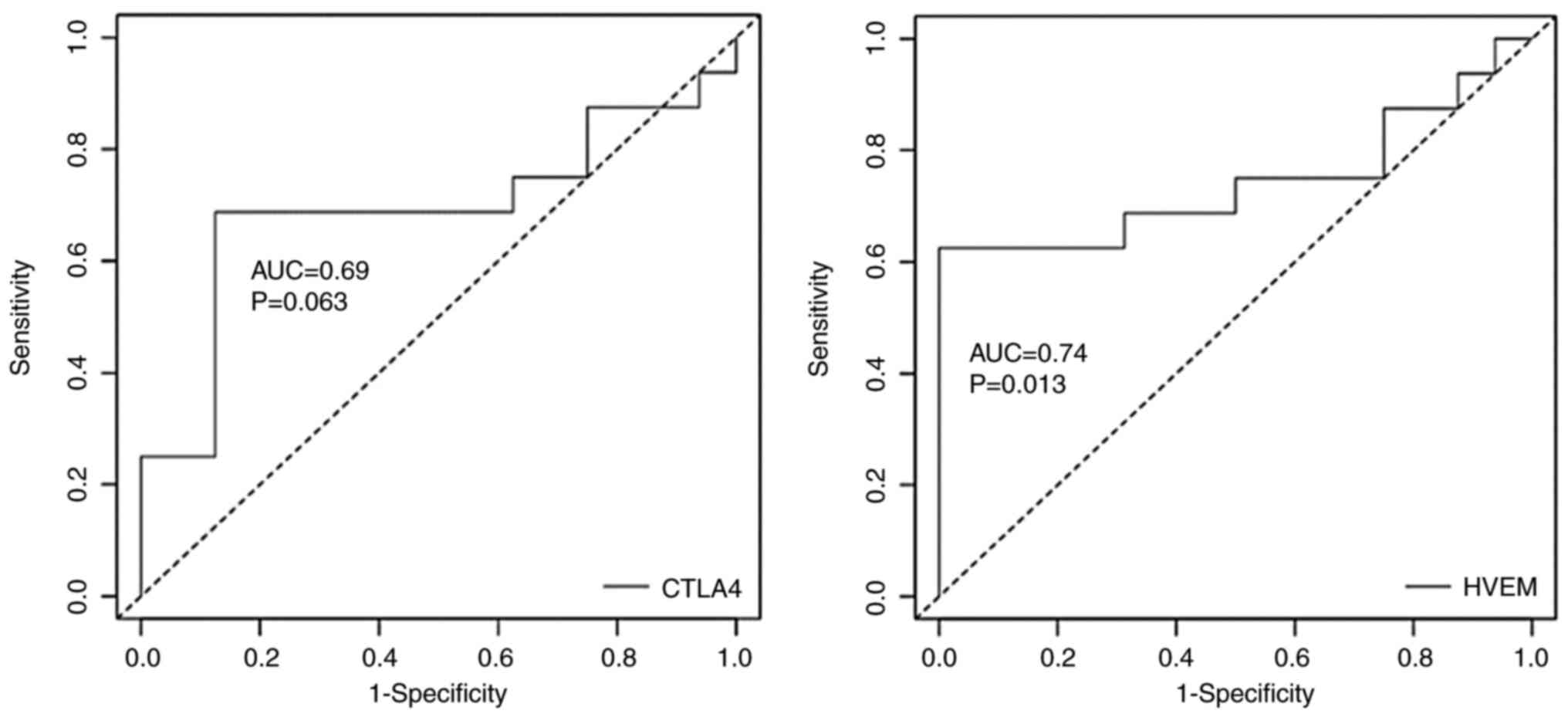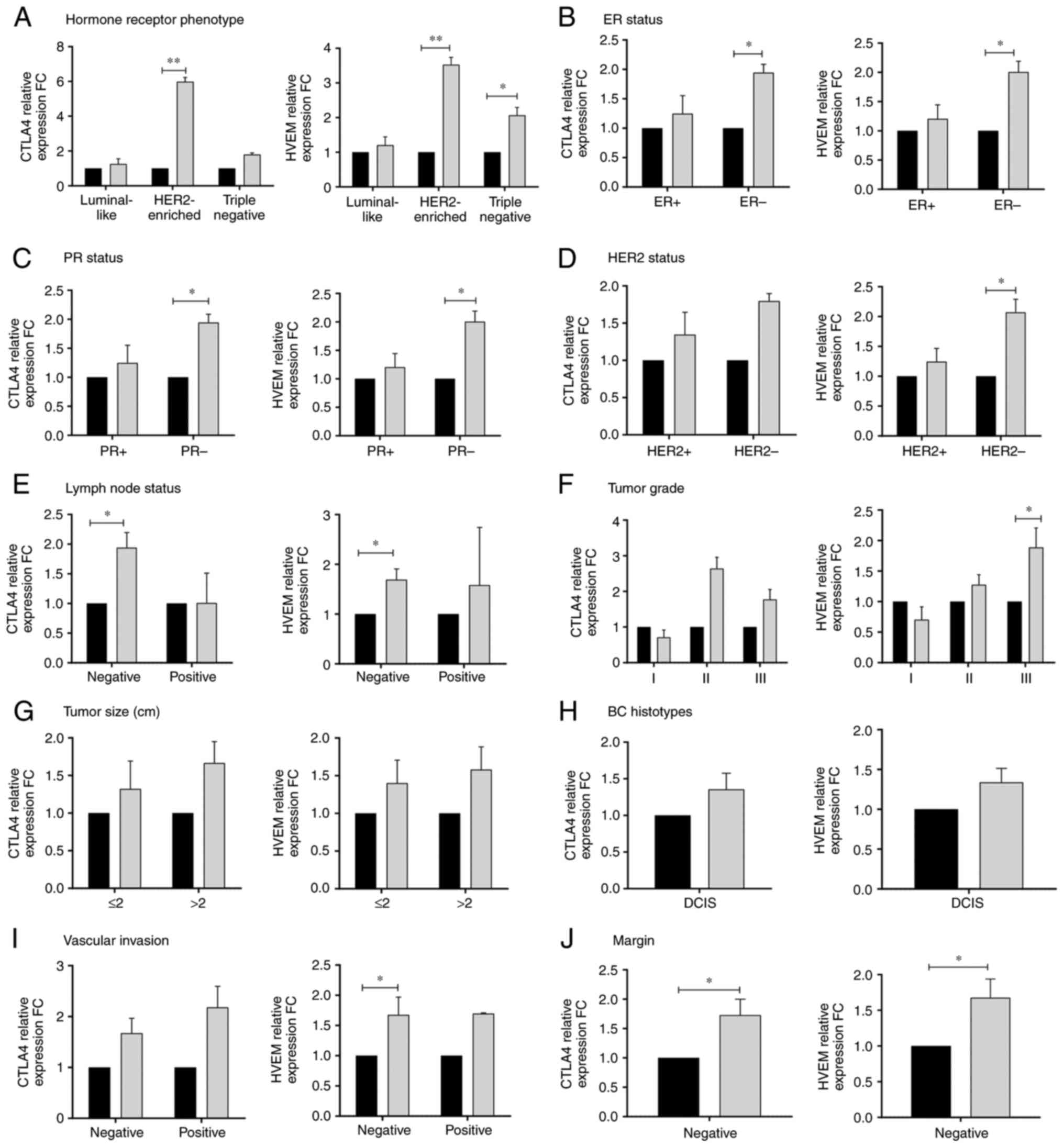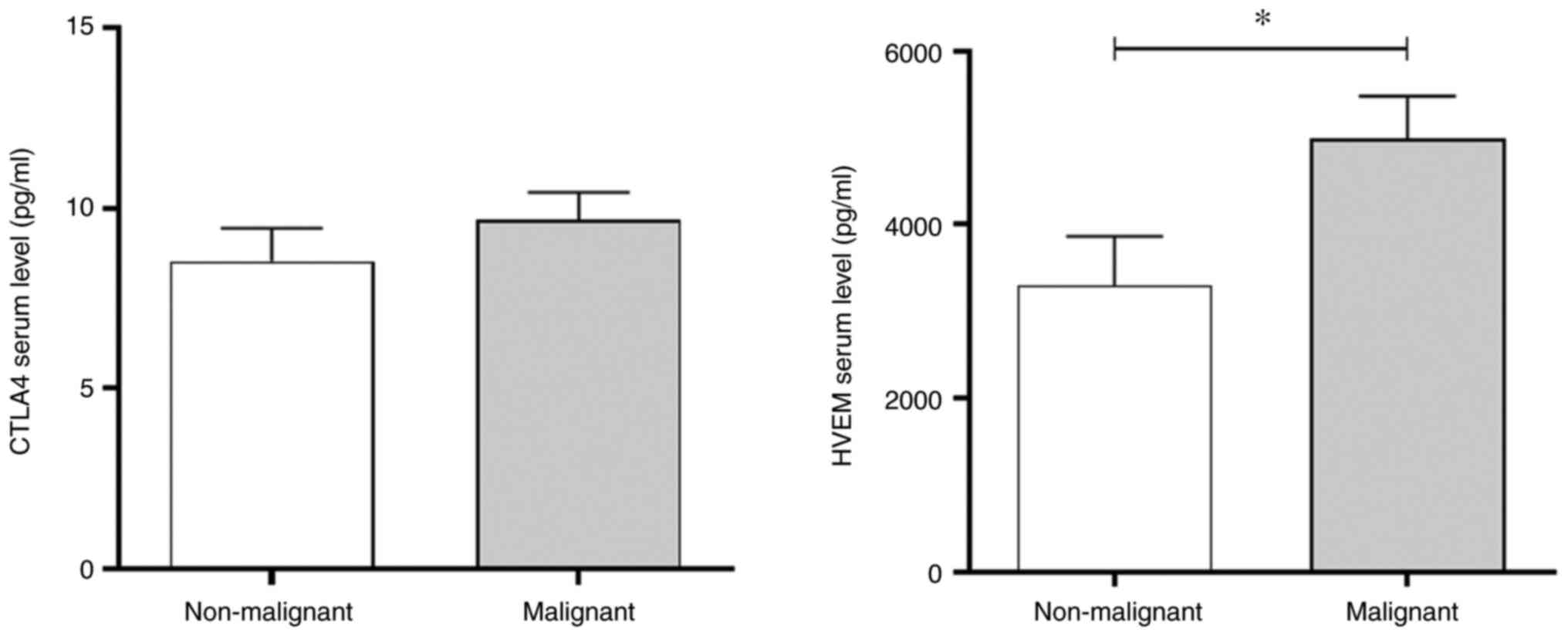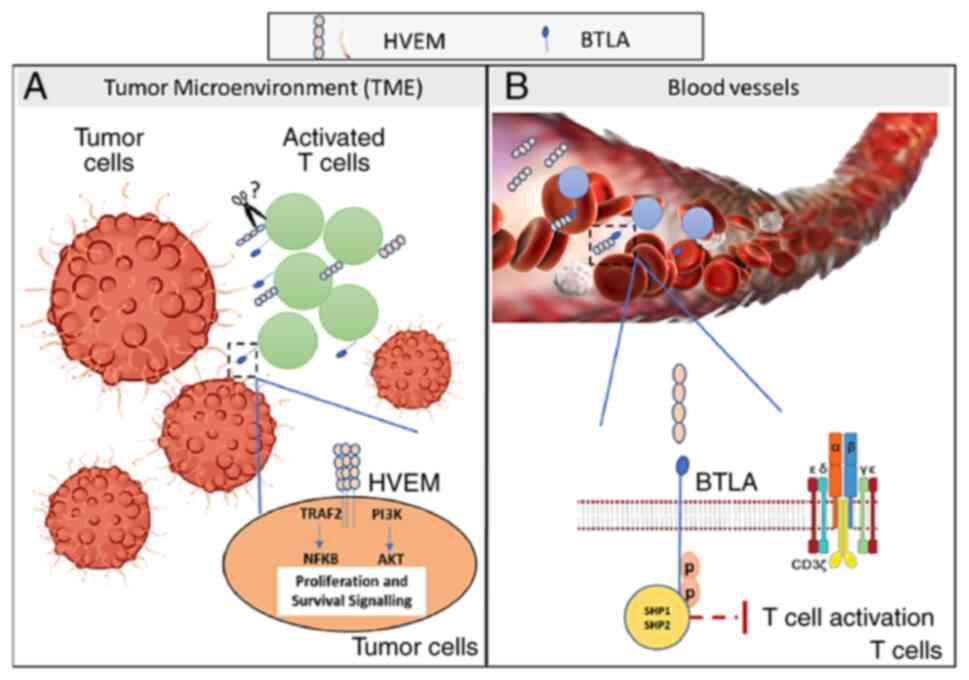|
1
|
Lei S, Zheng R, Zhang S, Wang S, Chen R,
Sun K, Zeng H, Zhou J and Wei W: Global patterns of breast cancer
incidence and mortality: A population-based cancer registry data
analysis from 2000 to 2020. Cancer Commun (Lond). 41:1183–1194.
2021.PubMed/NCBI View Article : Google Scholar
|
|
2
|
Sharma R: Breast cancer incidence,
mortality and mortality-to-incidence ratio (MIR) are associated
with human development, 1990-2016: Evidence from Global Burden of
Disease Study 2016. Breast Cancer. 26:428–445. 2019.PubMed/NCBI View Article : Google Scholar
|
|
3
|
Magro G, Salvatorelli L, Puzzo L, Piombino
E, Bartoloni G, Broggi G and Vecchio GM: Practical approach to
diagnosis of bland-looking spindle cell lesions of the breast.
Pathologica. 111:344–360. 2019.PubMed/NCBI View Article : Google Scholar
|
|
4
|
Broggi G, Filetti V, Ieni A, Rapisarda V,
Ledda C, Vitale E, Varricchio S, Russo D, Lombardo C, Tuccari G, et
al: MacroH2A1 immunoexpression in breast cancer. Front Oncol.
10(1519)2020.PubMed/NCBI View Article : Google Scholar
|
|
5
|
Fang J, Chen F, Liu D, Gu F, Chen Z and
Wang Y: Prognostic value of immune checkpoint molecules in breast
cancer. Biosci Rep. 40(BSR20201054)2020.PubMed/NCBI View Article : Google Scholar
|
|
6
|
Yi H, Li Y, Tan Y, Fu S, Tang F and Deng
X: Immune checkpoint inhibition for Triple-negative breast cancer:
Current landscape and future perspectives. Front Oncol.
11(648139)2021.PubMed/NCBI View Article : Google Scholar
|
|
7
|
Planes-Laine G, Rochigneux P, Bertucci F,
Chrétien AS, Viens P, Sabatier R and Gonçalves A: PD-1/PD-L1
targeting in breast cancer: The first clinical evidences are
emerging. A literature review. Cancers (Basel).
11(1033)2019.PubMed/NCBI View Article : Google Scholar
|
|
8
|
Kern R and Panis C: CTLA-4 expression and
its clinical significance in breast cancer. Arch Immunol Ther Exp
(Warsz). 69(16)2021.PubMed/NCBI View Article : Google Scholar
|
|
9
|
Watanabe N, Gavrieli M, Sedy JR, Yang J,
Fallarino F, Loftin SK, Hurchla MA, Zimmerman N, Sim J, Zang X, et
al: BTLA is a lymphocyte inhibitory receptor with similarities to
CTLA-4 and PD-1. Nat Immunol. 4:670–679. 2003.PubMed/NCBI View
Article : Google Scholar
|
|
10
|
Dill EA, Dillon PM, Bullock TN and Mills
AM: IDO expression in breast cancer: An assessment of 281 primary
and metastatic cases with comparison to PD-L1. Mod Pathol.
31:1513–1522. 2018.PubMed/NCBI View Article : Google Scholar
|
|
11
|
Miselis NR, Linn D, Restaino C, Baral T,
Xia J, Ueda R, Sawant A, Baker J, Raghunathan G, Wang X, et al:
Abstract 577: Antagonism of the co-inhibitory receptor BTLA
enhances efficacy of anti-PD-1 treatment in murine syngeneic tumor
models. Cancer Res. 77(577)2017.
|
|
12
|
Inoue T, Sho M, Yasuda S, Nishiwada S,
Nakamura S, Ueda T, Nishigori N, Kawasaki K, Obara S, Nakamoto T,
et al: HVEM expression contributes to tumor progression and
prognosis in human colorectal cancer. Anticancer Res. 35:1361–1367.
2015.PubMed/NCBI
|
|
13
|
Hokuto D, Sho M, Yamato I, Yasuda S, Obara
S, Nomi T and Nakajima Y: Clinical impact of herpesvirus entry
mediator expression in human hepatocellular carcinoma. Eur J
Cancer. 51:157–165. 2015.PubMed/NCBI View Article : Google Scholar
|
|
14
|
Tang M, Cao X, Li Y, Li GQ, He QH, Li SJ,
Chen J, Xu GL and Zhang KQ: High expression of herpes virus entry
mediator is associated with poor prognosis in clear cell renal cell
carcinoma. Am J Cancer Res. 9:975–987. 2019.PubMed/NCBI
|
|
15
|
Migita K, Sho M, Shimada K, Yasuda S,
Yamato I, Takayama T, Matsumoto S, Wakatsuki K, Hotta K, Tanaka T,
et al: Significant involvement of herpesvirus entry mediator in
human esophageal squamous cell carcinoma. Cancer. 120:808–817.
2014.PubMed/NCBI View Article : Google Scholar
|
|
16
|
Malissen N, Macagno N, Granjeaud S,
Granier C, Moutardier V, Gaudy-Marqueste C, Habel N, Mandavit M,
Guillot B, Pasero C, et al: HVEM has a broader expression than
PD-L1 and constitutes a negative prognostic marker and potential
treatment target for melanoma. Oncoimmunology.
8(e1665976)2019.PubMed/NCBI View Article : Google Scholar
|
|
17
|
Fourcade J, Sun Z, Pagliano O, Guillaume
P, Luescher IF, Sander C, Kirkwood JM, Olive D, Kuchroo V and
Zarour HM: CD8(+) T cells specific for tumor antigens can be
rendered dysfunctional by the tumor microenvironment through
upregulation of the inhibitory receptors BTLA and PD-1. Cancer Res.
72:887–896. 2012.PubMed/NCBI View Article : Google Scholar
|
|
18
|
Sideras K, Biermann K, Yap K, Mancham S,
Boor PPC, Hansen BE, Stoop HJA, Peppelenbosch MP, van Eijck CH,
Sleijfer S, et al: Tumor cell expression of immune inhibitory
molecules and tumor-infiltrating lymphocyte count predict
cancer-specific survival in pancreatic and ampullary cancer. Int J
Cancer. 141:572–582. 2017.PubMed/NCBI View Article : Google Scholar
|
|
19
|
Zhu YD and Lu MY: Increased expression of
TNFRSF14 indicates good prognosis and inhibits bladder cancer
proliferation by promoting apoptosis. Mol Med Rep. 18:3403–3410.
2018.PubMed/NCBI View Article : Google Scholar
|
|
20
|
Haymaker CL, Wu RC, Ritthipichai K,
Bernatchez C, Forget MA, Chen JQ, Liu H, Wang E, Marincola F, Hwu P
and Radvanyi LG: BTLA marks a less-differentiated
tumor-infiltrating lymphocyte subset in melanoma with enhanced
survival properties. Oncoimmunology. 4(e1014246)2015.PubMed/NCBI View Article : Google Scholar
|
|
21
|
Kim S, Park S, Cho MS, Lim W, Moon BI and
Sung SH: Strong correlation of indoleamine 2,3-dioxygenase 1
expression with basal-like phenotype and increased lymphocytic
infiltration in triple-negative breast cancer. J Cancer. 8:124–130.
2017.PubMed/NCBI View Article : Google Scholar
|
|
22
|
Schaer DA, Murphy JT and Wolchok JD:
Modulation of GITR for cancer immunotherapy. Curr Opin Immunol.
24:217–224. 2012.PubMed/NCBI View Article : Google Scholar
|
|
23
|
Choudhry H, Hassan MA, Al-Malki AL and
Al-Sakkaf KA: Suppression of circulating AP001429.1 long non-coding
RNA in obese patients with breast cancer. Oncol Lett.
22(508)2021.PubMed/NCBI View Article : Google Scholar
|
|
24
|
Lan X, Li S, Gao H, Nanding A, Quan L,
Yang C, Ding S and Xue Y: Increased BTLA and HVEM in gastric cancer
are associated with progression and poor prognosis. Onco Targets
Ther. 10:919–926. 2017.PubMed/NCBI View Article : Google Scholar
|
|
25
|
Pasero C and Olive D: Interfering with
coinhibitory molecules: BTLA/HVEM as new targets to enhance
anti-tumor immunity. Immunol Lett. 151:71–75. 2013.PubMed/NCBI View Article : Google Scholar
|
|
26
|
Fu Z and Li D, Jiang W, Wang L, Zhang J,
Xu F, Pang D and Li D: Association of BTLA gene polymorphisms with
the risk of malignant breast cancer in Chinese women of
Heilongjiang Province. Breast Cancer Res Treat. 120:195–202.
2010.PubMed/NCBI View Article : Google Scholar
|
|
27
|
Khalife E, Khodadadi A, Talaeizadeh A,
Rahimian L, Nemati M and Jafarzadeh A: Overexpression of regulatory
T Cell-related markers (FOXP3, CTLA-4 and GITR) by peripheral blood
mononuclear cells from patients with breast cancer. Asian Pacific J
Cancer Prev. 19:3019–3025. 2018.PubMed/NCBI View Article : Google Scholar
|
|
28
|
Zhou Y, Heitmann JS, Clar KL, Kropp KN,
Hinterleitner M, Engler T, Koch A, Hartkopf AD, Zender L, Salih HR,
et al: Platelet-expressed immune checkpoint regulator GITRL in
breast cancer. Cancer Immunol Immunother. 70:2483–2496.
2021.PubMed/NCBI View Article : Google Scholar
|
|
29
|
Jaberipour M, Habibagahi M, Hosseini A,
Habibabad SR, Talei A and Ghaderi A: Increased CTLA-4 and FOXP3
transcripts in peripheral blood mononuclear cells of patients with
breast cancer. Pathol Oncol Res. 16:547–551. 2010.PubMed/NCBI View Article : Google Scholar
|
|
30
|
Tsang JYS, Chan KW, Ni YB, Hlaing T, Hu J,
Chan SK, Cheung SY and Tse GM: Expression and clinical significance
of herpes virus entry mediator (HVEM) in breast cancer. Ann Surg
Oncol. 24:4042–4050. 2017.PubMed/NCBI View Article : Google Scholar
|
|
31
|
Wu S, Shi X, Wang J, Wang X, Liu Y, Luo Y,
Mao F and Zeng X: Triple-negative breast cancer: Intact mismatch
repair and partial Co-expression of PD-L1 and LAG-3. Front Immunol.
12(561793)2021.PubMed/NCBI View Article : Google Scholar
|
|
32
|
Kitano A, Ono M, Yoshida M, Noguchi E,
Shimomura A, Shimoi T, Kodaira M, Yunokawa M, Yonemori K, Shimizu
C, et al: Tumour-infiltrating lymphocytes are correlated with
higher expression levels of PD-1 and PD-L1 in early breast cancer.
ESMO Open. 2(e000150)2017.PubMed/NCBI View Article : Google Scholar
|
|
33
|
Baptista MZ, Sarian LO, Derchain SF, Pinto
GA and Vassallo J: Prognostic significance of PD-L1 and PD-L2 in
breast cancer. Hum Pathol. 47:78–84. 2016.PubMed/NCBI View Article : Google Scholar
|
|
34
|
Yasinska IM, Sakhnevych SS, Pavlova L, Teo
Hansen Selnø A, Teuscher Abeleira AM, Benlaouer O, Gonçalves Silva
I, Mosimann M, Varani L, Bardelli M, et al: The Tim-3-Galectin-9
pathway and its regulatory mechanisms in human breast cancer. Front
Immunol. 10(1594)2019.PubMed/NCBI View Article : Google Scholar
|
|
35
|
Carvajal-Hausdorf DE, Mani N, Velcheti V,
Schalper KA and Rimm DL: Objective measurement and clinical
significance of IDO1 protein in hormone receptor-positive breast
cancer. J Immunother Cancer. 5(81)2017.PubMed/NCBI View Article : Google Scholar
|
|
36
|
Livak KJ and Schmittgen TD: Analysis of
relative gene expression data using real-time quantitative PCR and
the 2(-Delta Delta C(T)) method. Methods. 25:402–408.
2001.PubMed/NCBI View Article : Google Scholar
|
|
37
|
Pfaffl MW, Horgan GW and Dempfle L:
Relative expression software tool (REST) for group-wise comparison
and statistical analysis of relative expression results in
real-time PCR. Nucleic Acids Res. 30(e36)2002.PubMed/NCBI View Article : Google Scholar
|
|
38
|
Hamed MH, Pushparaj PN, Rehman S, Al-Karim
S, Bazarah S and Qadri I: Deciphering the significance of plasma
chemokines as prognostic biomarkers in pegylated
IFN-Α-2a/Ribavirin-treated chronic Hepatitis C Genotype 4 patients.
Infect Disord Drug Targets. 22:58–62. 2022.PubMed/NCBI View Article : Google Scholar
|
|
39
|
Huwaikem MAH, Kalamegam G, Alrefaei G,
Ahmed F, Kadam R, Qadah T, Sait KHW and Pushparaj PN: Human
Wharton's Jelly stem cell secretions inhibit human leukemic cell
line K562 in vitro by inducing cell cycle arrest and apoptosis.
Front Cell Dev Biol. 9(614988)2021.PubMed/NCBI View Article : Google Scholar
|
|
40
|
Ledys F, Kalfeist L, Galland L, Limagne E
and Ladoire S: Therapeutic associations comprising Anti-PD-1/PD-L1
in breast cancer: Clinical challenges and perspectives. Cancers
(Basel). 13(5999)2021.PubMed/NCBI View Article : Google Scholar
|
|
41
|
Ji Q, Ding J, Hao M, Luo N, Huang J and
Zhang W: Immune checkpoint inhibitors combined with chemotherapy
compared with chemotherapy alone for triple-negative breast cancer:
A systematic review and meta-analysis. Front Oncol.
11(795650)2021.PubMed/NCBI View Article : Google Scholar
|
|
42
|
Miglietta F, Cona MS, Dieci MV, Guarneri V
and La Verde N: An overview of immune checkpoint inhibitors in
breast cancer. Explor Target Antitumor Ther. 1:452–472.
2020.PubMed/NCBI View Article : Google Scholar
|
|
43
|
Manni M and Läubli H: Targeting
glyco-immune checkpoints for cancer therapy. Expert Opin Biol Ther.
21:1063–1071. 2021.PubMed/NCBI View Article : Google Scholar
|
|
44
|
Basingab FS, Ahmadi M and Morgan DJ:
IFNγ-dependent interactions between ICAM-1 and LFA-1 counteract
prostaglandin E2-mediated inhibition of antitumor CTL responses.
Cancer Immunol Res. 4:400–411. 2016.PubMed/NCBI View Article : Google Scholar
|
|
45
|
Hassan MA, Al-Sakkaf K, Shait Mohammed MR,
Dallol A, Al-Maghrabi J, Aldahlawi A, Ashoor S, Maamra M, Ragoussis
J, Wu W, et al: Integration of transcriptome and metabolome
provides unique insights to pathways associated with obese breast
cancer patients. Front Oncol. 10(804)2020.PubMed/NCBI View Article : Google Scholar
|



